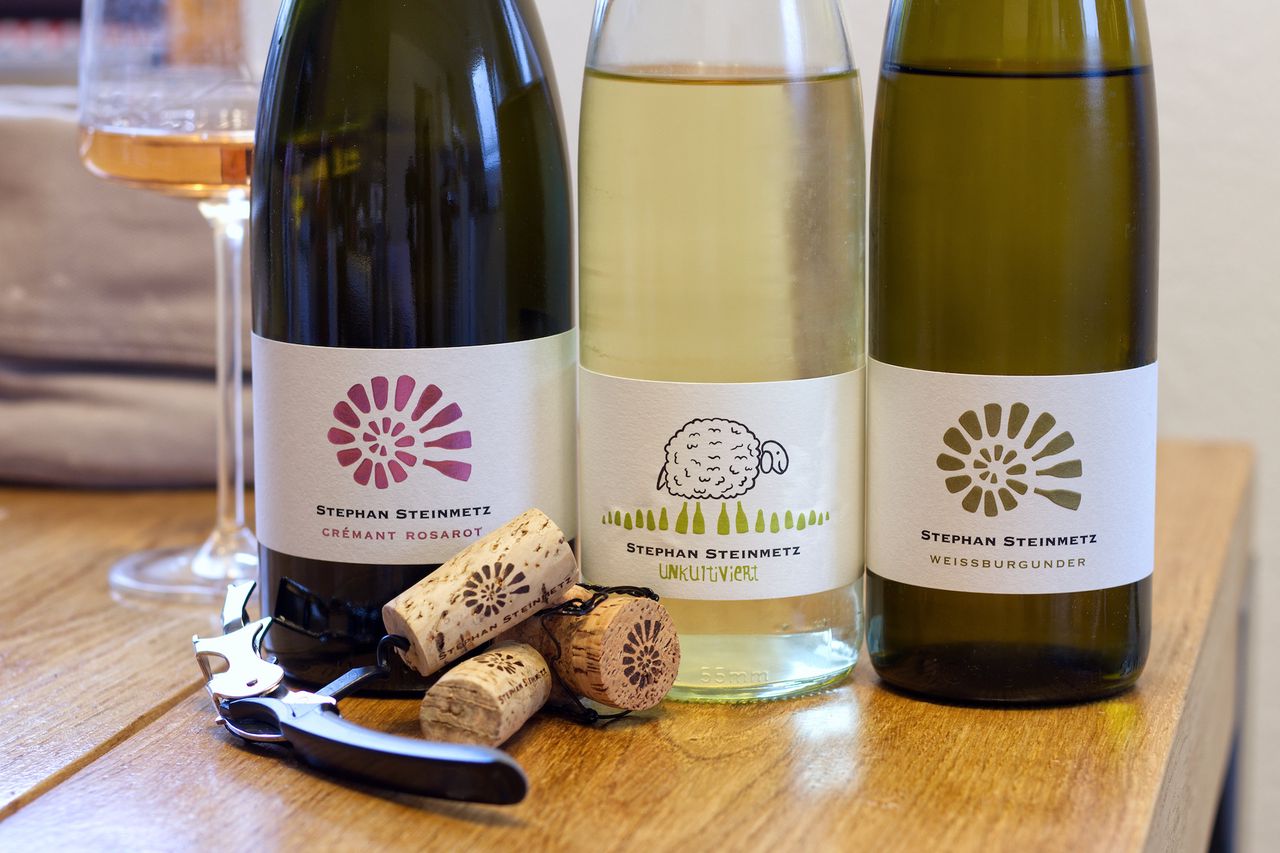Three Bottles Stephan Steinmetz
We drink from Stephan Steinmetz from the Upper Moselle a Weissburgunder, an Unkultiviert from two PiWis, each 2019, and in addition the Crémant RosaRot.

A winery on the Moselle without any Riesling or slate at all, but with Elbling, Burgundy varieties and Muschelkalk is actually worth a mention. But on the Upper Moselle, right on the border with Luxembourg and not far from France, this is quite normal for Stephan Steinmetz. What is really unusual and worth discovering is the origin of the wine Unkultiviert. But more about that later. We became aware of the winery through the Wrint Flaschen podcast and an interview by Christoph Raffelt. Looking at the dates, then time has flown by quite quickly. Since then, we’ve stumbled across the wines again and again. Especially the Elbling goes great with asparagus and the sparkling wines, here all Crémants from classic bottle fermentation, are always a lot of fun. However, we do not have Elbling in the glass this time, but Weissburgunder from 2019. And a Crémant RosaRot Brut made from Pinot Noir.
Really exciting is the third bottle. The 2019 Unkultiviert is a cuvée of two fungus-resistant grape varieties (PiWis). Mainly Sauvignac is in it, blended with a bit of Souvignier Gris for more structure. What sets the wine apart, however, is the way it is grown. The vines are trained unusually high to 1.70 m and pruned back once a year. The rest of the year the vine simply grows. Dwarf sheep live among the vines. Since, thanks to the PiWis, spraying is only necessary three times a year, the sheep stay in the vineyard all year except for 4 weeks and take care of weeds and soil maintenance. The project is still relatively young, the vines were planted in 2015 and we now have one of the first vintages in the glass. Stephan Steinmetz explains it all here in a video himself. Especially in the aerial photos you can clearly see the difference to the vines of the neighboring vineyard. And who knows, maybe this is a possible future of the estate wine.
Let’s start with the RosaRot. It takes a short time in the glass and starts with a decent stink. But only very briefly. Then subtle red berries and a bit of brioche. On the palate, fresh acidity, lots of bubbles and raspberry. Feels full in the mouth, has structure and gets more and more strawberry. Not cheap feeling, but just the way you remember fresh strawberries at this time of year. We finally like it so much that this spells the end for this bottle.
The Weissburgunder is much more floral. It has light apple notes, seems rather cool and taut. And that both on the nose and on the tongue. The wine has a great, fresh acidity, fine minerality and still seems almost a bit closed. Nevertheless, it is easy-drinking from the first sip on. Here, a night in the fridge brings more fruit to the wine. Crisp green apples, almost a sweet pear and further the freshness. This certainly also goes along great next to asparagus.
The last wine is the Unkultiviert. At first it starts pretty unspectacular with a bit of pome fruit and a light creaminess. But then it slowly becomes greener on the nose. And also on the tongue, where it is juicy, but also a bit green. There are gooseberries, not quite ripe, and a hint of green peppers mixed with a bit of exoticism. This is the kind of thing that clearly divides opinions here at the table. From opposite of my place comes nothing but praise and the wine disappears in large gulps, when I’m rather more restrained, but I can definitely grow fond of it. The next evening, we are still not necessarily of the same opinion about the wine. It now clearly has cassis aromas and the green is a bit further in the background. She thinks it’s great. I willingly give away the rest of the bottle. Doesn’t matter, though. I’m really starting to think that these grapes and perhaps even this form of cultivation are having an interesting future ahead of them.